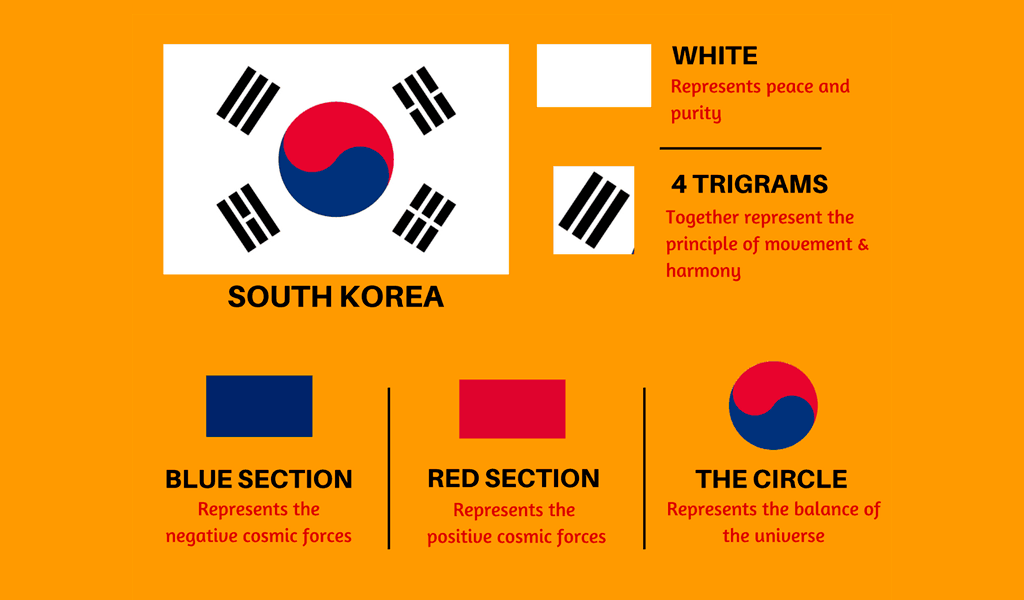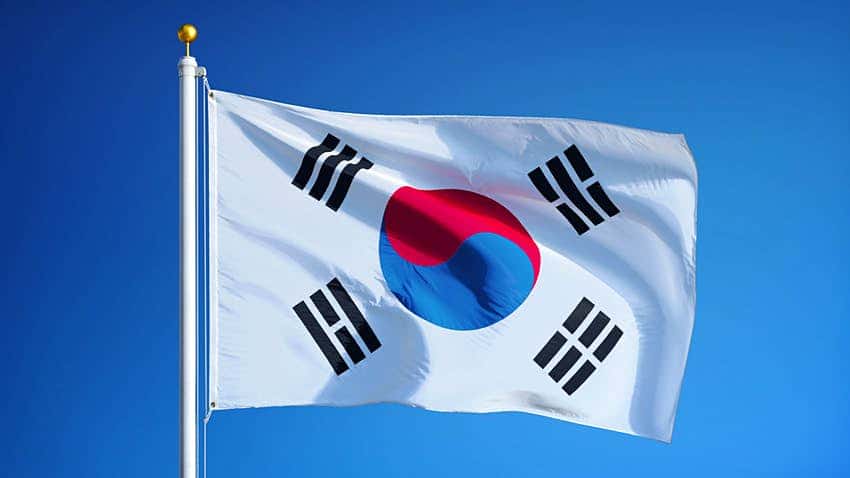Perhaps the most instantly recognizable flag of all time is the South Korean flag. It is simple and easy to recognize. The flag’s colors and symbols have deeper meanings.
Create your own logo with Turbologo logo maker. It takes less than 5 minutes and no design skills needed.
Go to Logo MakerThe History of the South Korean Flag
In 1889, the need for a national flag was felt. Korean the latter 19th century, Korea began to open its borders for outsiders after being pressured by its powerful neighbors, China and Japan. The new flag was adopted in August 1882 and has remained the standard pattern since then.
The Flag’s Meaning

The flag’s elements represent the dual forces of nature. The blue and red circle at the center of the flag is called “taegeuk” in Korean (tai chi, in Chinese). It literally means “supreme.” Each part of the circle looks like a comma. The red upper part of the circle represents the forces yang (yang also in Chinese) and the blue lower part the forces um (yin).

Together, the yang, um and to form the to (tao, in Chinese). This signifies the ever-changing, yet complementary, forces or principles that are embodied in every aspect of life, including light and dark, good and bad, active and passive, male and female, active and passive, and masculine and female. The beginning of everything is represented by the thick, round portion of each comma. The tail represents the end. Where the yang ends, the um disappears.
Idea of dualism
Further, the four sets of trigrams convey the idea that the cosmos is dualism. Heaven is the manifestation of the pure yang principle. A set of three unbroken lines represents heaven; the opposite of it, a set with three broken lines represents the earth. The manifestation of pure um principle. The two broken lines between the extremes of yang/um signify fire; the two lines that have a broken line in their middle represent water. These four trigrams together represent the seasons and cardinal directions.
I’m a product and graphic designer with 10-years background. Writing about branding, logo creation and business.









